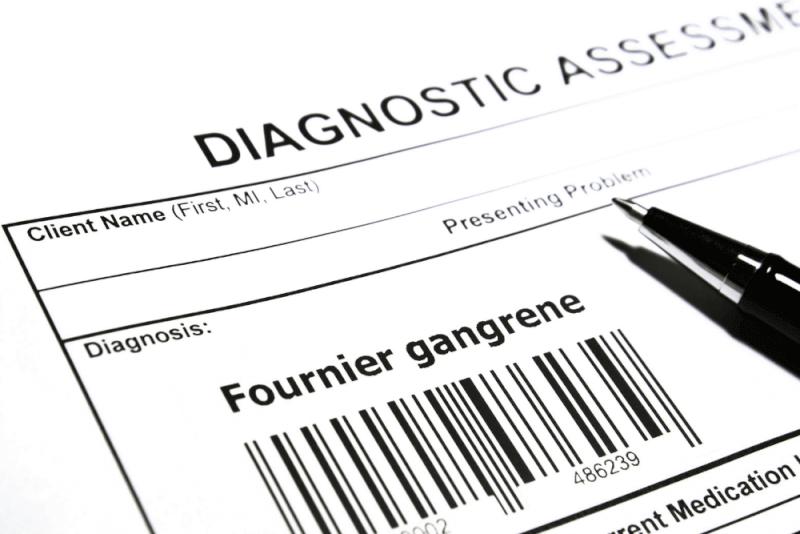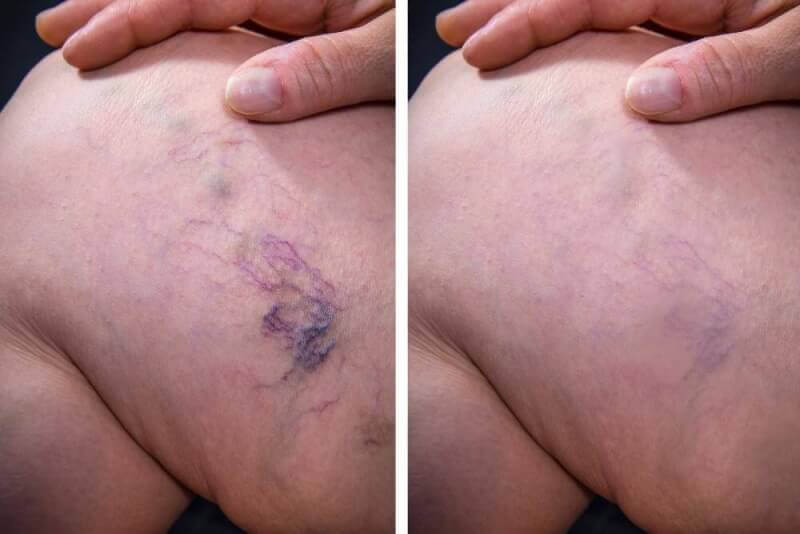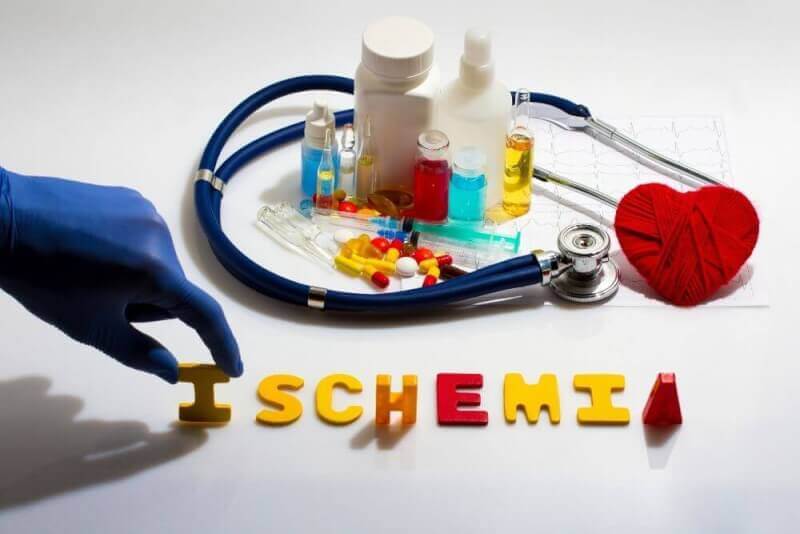30-Second Summary
- Gangrene refers to the death of body tissue due to lack of blood flow or a serious bacterial infection.
- It is not possible to save the tissue damaged by gangrene. However, various treatments can be applied to prevent the condition from worsening.
- The fastest progressing type is gas gangrene. If left untreated, it can become fatal within 48 hours.
- Types of gangrene do not rapidly threaten life. Wet and gas gangrene are the most severe and deadly types.
What is Gangrene?
Gangrene refers to the death of body tissue due to lack of blood flow or a serious bacterial infection. Gangrene usually begins in the fingers and toes and can also affect the arms and legs. In addition, it can occur in internal organs such as muscles and the gallbladder.
Causes of Gangrene
The causes of gangrene include the following:
Insufficient Blood Supply
Blood provides oxygen and nutrients to the body. It also supplies antibodies to help the immune system fight infections. Without adequate blood supply, cells cannot survive. Therefore, tissues die in cases of insufficient blood flow, resulting in gangrene.
Infection
If left untreated, an infection can cause tissue death that may lead to gangrene.
Traumatic Injuries
Open wounds caused by crush injuries such as gunshot wounds or car accidents can allow bacteria to enter the body and lead to gangrene. Bacteria cause the tissues to become infected. If not treated, gangrene may develop.
Risk Factors for Gangrene
The risk of developing gangrene increases in health conditions that affect blood vessels. These conditions include the following:
Atherosclerosis
This condition, defined as the buildup of plaque in the arteries, makes it harder for blood to flow and increases the risk of gangrene.
Buerger's Disease
Buerger's disease, which causes inflammation of the blood vessels in the limbs and leads to the formation of blood clots, reduces blood flow and increases the risk of gangrene. It is especially seen in people who smoke or chew tobacco.
Diabetes
Diabetes damages nerves and blood vessels and also slows the healing of open wounds. Slow wound healing increases the risk of infection. The risk of gangrene increases significantly, especially in the feet.
Peripheral Artery Disease
This disease causes plaque buildup in the blood vessels of the limbs, reducing blood flow to the hands, arms, and legs.
Popliteal Artery Entrapment Syndrome
This term refers to the compression of the popliteal artery by the calf muscles. As a result, the amount of blood reaching the lower leg during exercise decreases.
Raynaud's Syndrome
This condition, caused by cold and hot weather affecting the blood vessels in the fingers and toes, leads to the narrowing of the vessels. The narrowing of blood vessels disrupts blood flow.
Vasculitis
Vasculitis, which is the inflammation of blood vessels, affects blood flow.
Other Risks
The risk of gangrene is higher in severe injuries. Injuries with a high risk of gangrene include the following:
- Car accidents
- Frostbite
- Gunshot wounds
- Severe burns
In addition, people with weakened immune systems also have a significantly increased risk of gangrene. Conditions that may weaken the immune system include the following:
- Alcohol use disorder
- Being over the age of 60
- Chemotherapy
- HIV
- Kidney failure
- Long-term drug use
Symptoms of Gangrene
Symptoms of gangrene vary depending on the cause. General symptoms that may be noticeable in the affected area include:
- Redness and swelling of the skin
- Severe pain
- Loss of sensation
- Pale and cold-feeling skin
If gangrene is caused by a bacterial infection, the following symptoms may occur:
- Skin color changing from red to brown, then to purple or greenish-black
- Chills
- A crackling sound when pressing the skin
- Rapid breathing
- Increased heart rate
- Hot flashes
- Sweating
- Feeling anxious
- Fever
- Loss of appetite
- Severe pain
- Skin that feels tight or tender to the touch
- Wounds and blisters that discharge blood or foul-smelling pus
- Vomiting
If gangrene affects the skin, the following symptoms may also occur:
- Color changes
- Swelling
- Blister formation
- Sudden pain followed by numbness
- Foul-smelling discharge from the wound
- Thin, shiny, and hairless skin
- Skin that feels cold to the touch
Diagnostic Criteria for Gangrene
The following tests can help diagnose gangrene:
Blood Tests
A high white blood cell count is generally considered a sign of infection. Additional blood tests may be ordered to check for specific bacteria or microorganisms.
Fluid or Tissue Culture
Various tests can be performed on fluid taken from a skin blister to detect bacteria. A tissue biopsy may also be performed to determine tissue death.
Imaging Tests
X-rays, CT scans, and MRIs show organs, blood vessels, and bones. These tests help determine how far the gangrene has spread.
Surgery
Surgery may be performed to better visualize the inside of the body and understand the extent of tissue infection.
Treatment Methods for Gangrene
It is not possible to save tissue damaged by gangrene. However, various treatments can be applied to prevent the condition from worsening. The sooner treatment begins, the more healthy tissue can be preserved. The treatment methods used vary depending on the cause and severity of the gangrene.
Removal of Tissue
Depending on the type and severity of the gangrene, more than one surgery may be required. The following surgical methods are used to treat gangrene:
Debridement
This type of surgery involves removing the infected tissue and stopping the spread of infection.
Vascular Surgery
This treatment involves removing damaged or diseased blood vessels to restore blood flow to the infected area.
Amputation
In severe cases of gangrene, the infected body part is surgically removed. A prosthetic limb may be fitted after surgery.
Skin Graft
In some cases, surgery may be performed to repair damaged skin and improve the appearance of scars related to gangrene. Skin grafts are used in these surgeries, where healthy skin is taken from another part of the body and placed over the affected area. These operations are only performed if there is sufficient blood flow to the area.
Infection Control
If gangrene is caused by bacterial infections, antibiotic treatment can be applied to eliminate the infection.
Restoring Blood Flow
Surgery or various procedures can be performed to help improve blood flow in the affected vessels. These options include:
Bypass Surgery
Creates a new pathway for blood flow to bypass the blockage.
Angioplasty
A small balloon is inflated inside the vessel to widen it, allowing more blood to flow through. A stent may also be inserted during this procedure.
Hyperbaric Oxygen Therapy
This procedure is performed in a pressurized chamber filled with pure oxygen. The patient lies on a stretcher that slides into a transparent plastic tube. The pressure inside the chamber is slowly increased to about 2.5 times the normal atmospheric pressure.
Hyperbaric oxygen therapy helps the blood carry more oxygen. Oxygen-enriched blood slows the growth of bacteria in oxygen-deprived tissues and enables patients to heal more quickly.
For gangrene, hyperbaric oxygen therapy usually lasts about 90 minutes. It may be applied 2–3 times a day until the infection is completely cleared from the body.
Types of Gangrene
Gangrene is categorized into types based on its characteristics. These types include:
Wet Gangrene
Wet gangrene is the type that occurs when bacteria infect the tissue. Common symptoms of this type include swelling, blisters, and a moist skin appearance.
Wet gangrene usually occurs after serious burns, frostbite, or injuries. It is also frequently seen in diabetic individuals who unknowingly injure their feet or toes. Due to its rapid spread, it can be fatal and must be treated as soon as possible.
Dry Gangrene
This type of gangrene is characterized by dry, shriveled skin that changes color from brown to purplish-blue or black. Dry gangrene develops slowly and is often seen in people with blood vessel diseases such as diabetes and atherosclerosis.
Gas Gangrene
Gas gangrene usually affects deep muscle tissue. At first, the skin may appear normal. As the condition progresses, the skin becomes pale and then turns grayish or purplish-red. Blisters may appear, and a crackling sound may be heard when pressure is applied due to gas within the tissue.
Gas gangrene is usually caused by a bacterium called Clostridium perfringens. These bacteria gather in wounds with no blood supply or in surgical wounds. The bacterial infection produces toxins that release gas and cause tissue death. Like wet gangrene, gas gangrene is a life-threatening type of gangrene.
Internal Gangrene
This type affects one or more internal organs, such as the intestines, gallbladder, or appendix. It occurs due to reduced or blocked blood flow to internal organs. Causes such as twisted intestines or hernias can lead to internal gangrene. If left untreated, it is fatal.
Fournier's Gangrene
This type of gangrene affects the genital organs. It typically affects men but can also occur in women. An infection in the genital area or urinary tract may cause this type of gangrene.
Meleney's Gangrene
This is a rare form of gangrene, usually appearing as a complication of surgery. Painful skin lesions typically begin to appear one to two weeks after the operation. This condition is also known as bacterial synergistic gangrene.
How to Prevent Gangrene?
The following measures can help reduce the risk of gangrene:
Managing Diabetes
It is important for people with diabetes to keep their blood sugar levels under control. Hands and feet should also be frequently checked for signs of infection, such as cuts, wounds, swelling, or discharge.
Weight Loss
Excess weight increases the risk of diabetes. It also puts pressure on arteries, slowing down blood flow. Reduced blood flow increases the risk of infection and slows wound healing.
Tobacco Products
Long-term use of tobacco products can damage blood vessels.
Hand Washing
Following good hygiene practices can reduce the risk of infection. Open wounds should also be washed with soap and water.
Controlling Frostbite
Frostbite reduces blood flow in the affected area. If your skin is cold, hard, pale, and numb after being exposed to cold weather, you should consult a healthcare professional.
Other Considerations
The following additional measures should also be considered to prevent gangrene:
- Adopt a heart-healthy diet that is low in saturated fat.
- Exercise regularly.
- Avoid walking barefoot outdoors.
- Trim toenails in a straight line from end to end and file the corners if needed.
- Wash feet daily and dry them thoroughly.
- Wear socks and shoes that fit properly.
How Fast Does Gangrene Develop?
The progression time of gangrene varies depending on the type. For example, the fastest progressing type is gas gangrene. If left untreated, it can be fatal within 48 hours.
Is Gangrene Fatal?
If gangrene is left untreated, tissue death progresses. When the amount of dead tissue in the body exceeds what the body can manage, it leads to the production of more waste than the body can handle, making it fatal. However, not all types of gangrene pose an immediate threat to life. Wet and gas gangrene are the most severe and deadly forms.
Where Does Gangrene Occur?
In principle, gangrene can occur in all tissues. However, the most commonly affected areas include:
- Fingers and toes
- Hands
- Feet
- Arms
- Legs
- Intestines
- Appendix
- Gallbladder
- Genital organs







